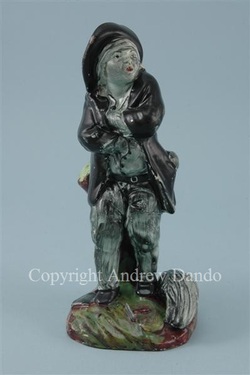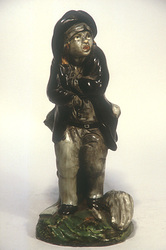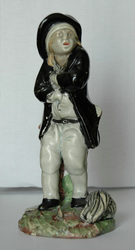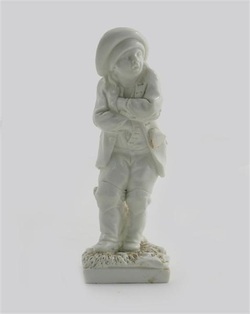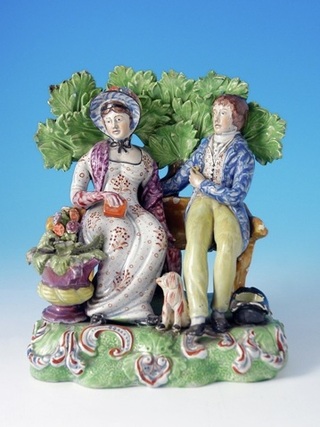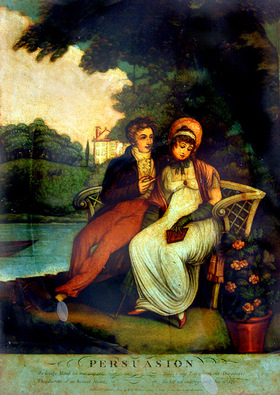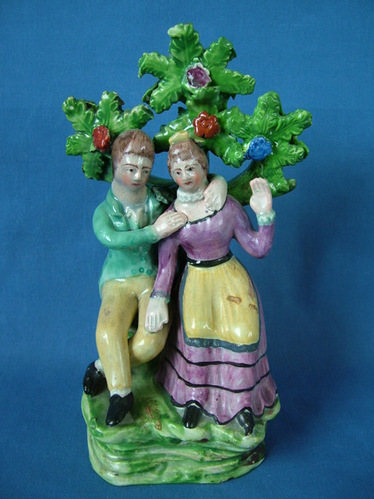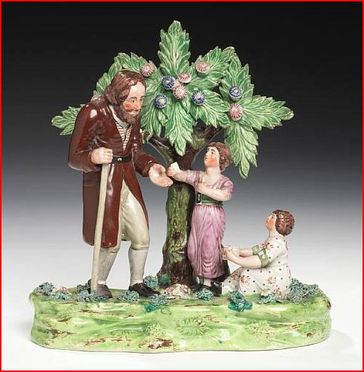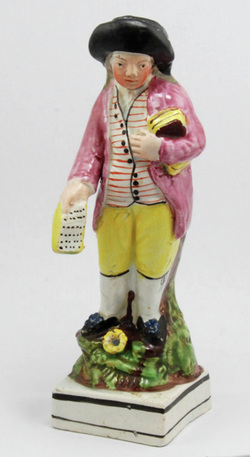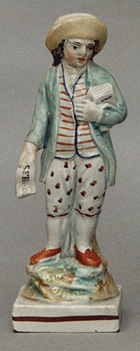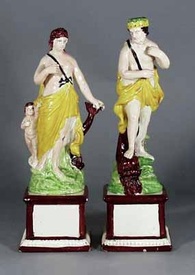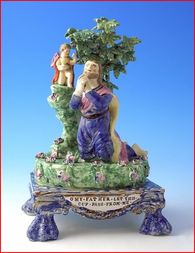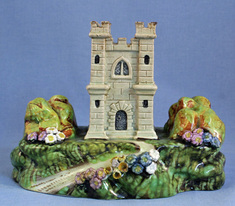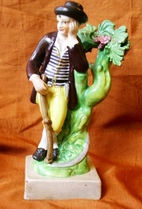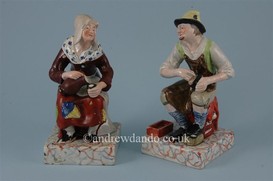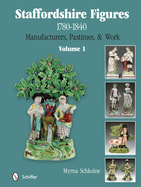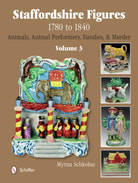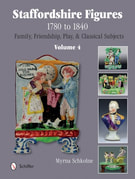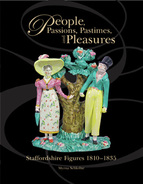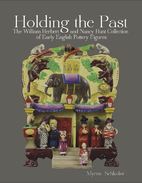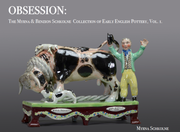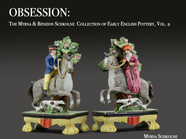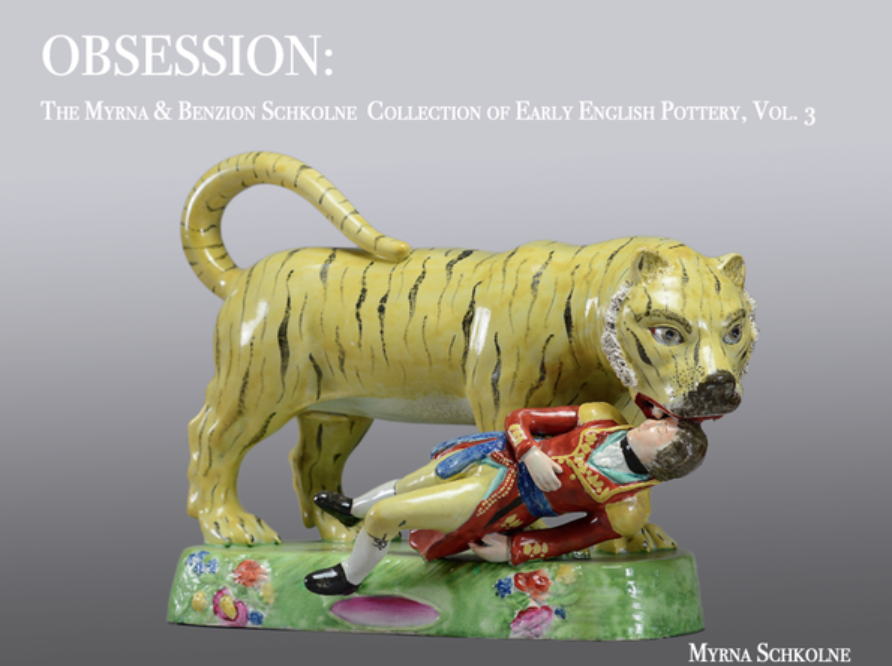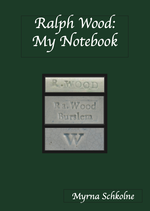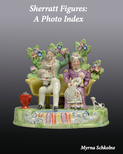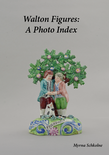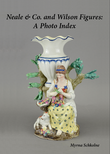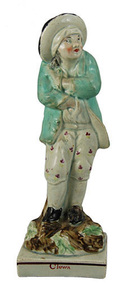
Seems that the mold for our sweep was multi-purpose, to put it mildly. We find the same mold used for this figure titled Clown, and yes, you guessed it: the figure is attributable to Ralph Wood. You will find it here, numbered A5.

Apparently Ralph Wood put this mold to good use yet again. This time, the figure has a bocage and is titled Sloth. See it here in our Ralph Wood archive, numbered A5.
What's the relationship between the Fulda figure and its English counterparts? I think the Fulda figure is the source of the English figure. Ralph Wood seems to have made the earliest English versions of this figure. Ralph Wood was active from 1782 to 1795--a period that included the final years of Fulda production. Prior to 1782, Ralph Wood was a merchant in Bristol. Here he must have seen the finest European porcelain figures displayed in city shops for an affluent clientele. I believe one or other of these inspired Ralph's modelling of the English figure.
